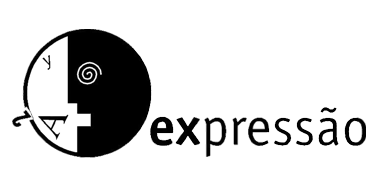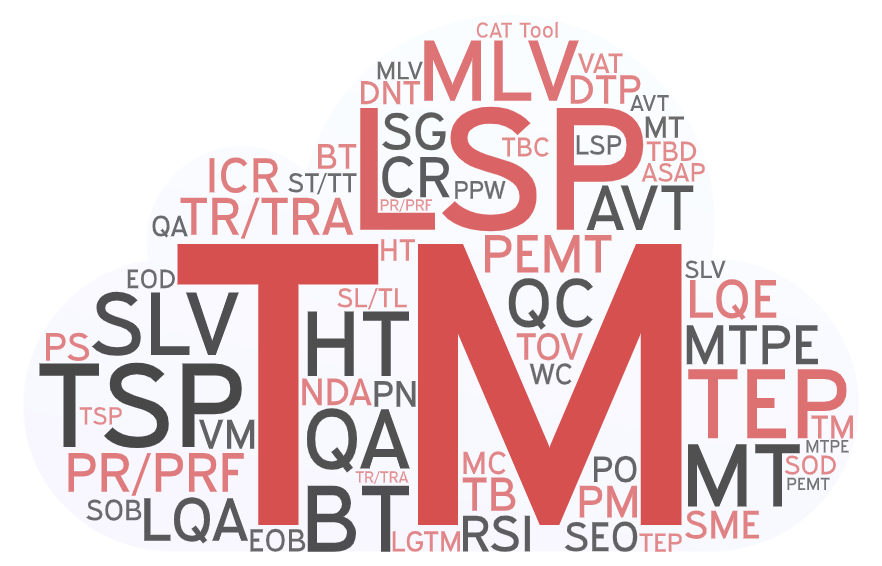Both clients and newly arrived freelancers sometimes find themselves lost among all the acronyms they are faced with and learn on the go.
The translation industry is a rather fast-paced one, both in terms of how fast it develops and transforms, and in the sense that deadlines can be very tight and turnarounds very quick, so using abbreviations is not a whim, but a sheer necessity.
We compiled a list of acronyms used in the translation industry that seem to be the most used and most relevant for our work. We also added a short explanation for those that can be a bit trickier.
So, here we go.
Services
TR/TRA, T9N – translation
PR/PRF – proofreading
The ”four eyes” principle is the golden standard of the industry. After the text is translated, it is proofread by another linguist for possible mistranslations, typos, and other errors.
TEP – translation, editing and proofreading
As opposed to proofreading, editing includes a deeper analysis of the text, including improving its style and readability.
L10N – localisation
Adaptation of the content to cultural, linguistic, and other particularities of the target audience.
I18N – internationalisation
In language services, internationalisation refers to a set of measures including translation and localisation to one or more languages considering regional cultural, linguistic, and other differences, as well as adjusting the original (source) text/product to make it more easily translatable and localisable. In a slightly wider sense, internationalisation implies putting thought into how easy it would be to translate and localise the product (e.g. a website or a video game) already in the design process.
G11N – globalisation
Tailoring the product to multiple markets while maintaining recognisability and consistency of the overall image of the client globally.
T&I – translation and interpreting
The most visible difference between translation and interpreting is the medium: translators translate into a written text, while interpreters translate orally. This, of course, implies many other methodical, psychological, and procedural differences between the two activities.
BT – back translation
Translation of a translated text back to the initial source language. This service is often requested by clients who don´t speak the target language, to make sure the message was passed on the way it was intended.
HT – human translation
MT – machine translation
MTPE – machine translation post-editing, also PEMT – post-editing machine translation
Human editing of a text translated by a machine, to improve its readability and eliminate errors.
AVT – audiovisual translation
Translation of audiovisual products, such as movies, series, and TV shows. The translation can then be used for dubbing, subtitles, and voice-over. Sometimes translators can also create the subtitles, in that case, clients refer to it as “translation and subtitling”, or simply “subtitling in X language”.
QA/QC – quality assurance/quality control
TQC – translation quality control
LQA – linguistic quality assurance
LQE – linguistic quality evaluation
Procedures of control, evaluation, and assurance of quality of the final product, considered at company level or accepted in the industry as a whole.
CR – contextual review, also ICR – in-context review
A review of the target text in the context it is going to be used (website, video game, etc.), which can affect layout, readability or show other unexpected difficulties that wouldn´t otherwise be discovered.
DTP – desktop publishing
Preparing the target text to look visually like the original and/or as intended. This includes something as simple as laying out a translation of a certificate to be similar to the original document or as complex as laying out a website or a book in accordance with specific requirements of the target language and/or audience.
SEO – search engine optimisation
Editing the text in a way that keywords organically appear more often, making the text more visible to search engines.
RSI – remote simultaneous interpreting
Simultaneous interpreting where the interpreter is not physically with the clients, for example, over the phone or a videoconference. This mode is very useful for dangerous or hard-to-reach areas and rare language pairs.
Professionals (people and companies)
TSP – translation service provider
A company or person (freelancer) that provides translation services.
LSP – language service provider
As opposed to TSPs, LSPs can also do proofreading, editing, desktop publishing and other.
SLV – single-language vendor
MLV – multi-language vendor
SME – subject-matter expert
A specialist, not necessarily a linguist (often not a linguist), who has deep knowledge about the specific, narrow and/or complex topic. SMEs are often asked to do a monolingual review of the translation to make sure it makes sense to professionals.
PM/VM – project manager / vendor manager
Managers that interact with clients and vendors about the jobs (PM) and with vendors about not directly job-related issued, such as creating, maintain and updating the vendor database, requesting and uploading necessary documents, etc. (VM)
Documents and resources
NDA – non/disclosure agreement
T&C – terms and conditions
SG – style guide
ToV – tone of voice
TMS – translation management system
BMS – business management system
Platforms or programs used by companies and freelancers (more rarely) for automatisation of requests, translation, job delivery, or invoices (sometimes all of that).
SL/TL – source language / target language
ST/TT – source text / target text
CAT tool – computer-aided/assisted translation tool
Not to be confused with machine translation. A CAT tool is still a tool for a translator, not a substitute. It allows freelancers and companies to maintain consistency throughout long-term relations with clients by keeping track of the previous translations and preferred terms in translation memories and term bases, respectively.
TM – translation memory
TB – termbase
Pricing and invoicing
PO – project order
PS – project specification
PN – project number
WC – word count
PPW – price per word
MC – minimum charge
VAT – value-added tax
Communication
NT – not translatable
DNT – do not translate
These expressions are not unique to the translation industry, but still appear a lot, so we chose to include them:
LGTM – looks good to me
ASAP – as soon as possible
SOB – start of business
EOB – end of business
SOD – start of day
EOD – end of day
TBC – to be confirmed
TBD – to be determined

